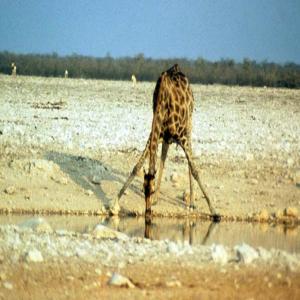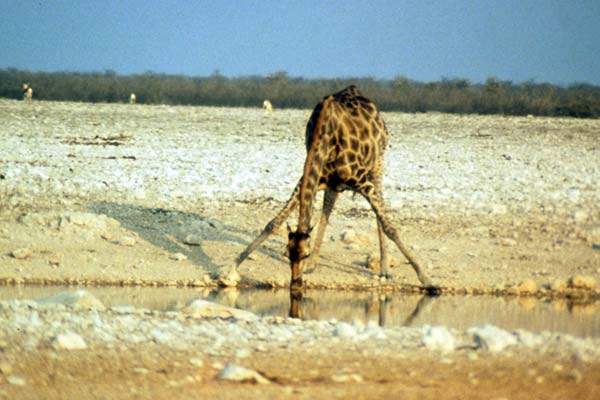Episodes

Monday Oct 03, 2011
The WildLife: Nature Walks and Backyard Wildlife, Mark Fraser
Monday Oct 03, 2011
Monday Oct 03, 2011
Naturalist Mark Fraser shares his enthusiasm for wildlife and reveals simple things you can do to help wildlife in your own backyard. He takes "The WildLife" host Laurel Neme on a "virtual tour" of New England forests to meet local "residents" from fishers to coywolves to salamanders and songbirds. This episode of "The WildLife" originally aired on The Radiator, WOMM-LP, 105.9 FM in Burlington, Vermont on January 31, 2011 and was reposted on October 3, 2011.

Monday Jun 13, 2011
The WildLife: Dung Beetles, Doug Emlen
Monday Jun 13, 2011
Monday Jun 13, 2011
Doug Emlen, a University of Montana biology professor, reveals the strange and endearing characteristics of dung beetles. He tells “The WildLife” host Laurel Neme about their unique biology and diversity and how the varied shapes of their horns affect their lifestyle. Doug Emlen is a professor of biology at the University of Montana and an expert on the evolution and development of bizarre and extreme morphology of insects. Always interested in animal armaments, he became a dung beetle aficionado after studying a Panamanian dung beetle specializing in howler monkey scat. Since then, he has broadened his research to dung beetles all over the world and has noticed interesting patterns in their weaponry. He has expanded his focus to explore the evolutionary forces that make animal weapons, from dung beetle horns to elk antlers to rhino horns, so diverse. This episode of “The WildLife” aired on The Radiator, WOMM-LP, 105.9 FM in Burlington, Vermont on June 7, 2010 and was rebroadcast on June 13, 2011.

Monday Apr 04, 2011
The WildLife: Winged Obsession, Jessica Speart
Monday Apr 04, 2011
Monday Apr 04, 2011
Jessica Speart, author of Winged Obsession: The Pursuit of the World's Most Notorious Butterfly Smuggler, discusses illegal trade of rare butterflies. She tells “The WildLife” host Laurel Neme about the real-life characters in her book: Yoshi Kojima, the world’s most wanted butterfly smuggler, and the rookie US Fish and Wildlife agent, Ed Newcomer, who finally brings him down. The trade in rare butterfly species is a lucrative business. While there is much trade that is legal, the illegal butterfly trade could be worth up to $200 million each year. “Butterfly collectors with the financial means will do whatever necessary to obtain the specimens they want,” Speart says. For some, it’s like stamp collecting. For others, it’s the equivalent of collecting a Renoir or Van Gogh.
While habitat loss is the most significant threat to butterflies, poaching adds to the stress on these delicate insects – so much so that when criminals target the rare species, extinction becomes a real possibility. Butterfly poachers often pursue the most endangered species, and many prowl national parks where they collect butterfly eggs to raise in a controlled environment. They do this so that they can end up with perfect specimens—and a higher price. Whenever the wings are damaged, the value of the butterfly drops dramatically. As Speart describes in this interview, “The way you get a perfect specimen is to kill them shortly after they’re born.” There’s no other way to make sure its wings remain unused and in perfect condition.
Jessica Speart is a freelance journalist specializing in wildlife enforcement issues. She's been published in the New York Times Magazine, OMNI, Travel + Leisure, Audubon, National Wildlife, Mother Jones, Delta's Sky magazine, and many others. She is also the author of ten crime novels featuring the fictional character of US Fish and Wildlife Service special agent Rachel Porter. Rachel has an unwavering devotion to tracking down the enemies of rare and endangered species and, in each book, solves a mystery focused around real world wildlife crimes. Her most recent book, Winged Obsession, is Jessica’s first non-fiction book. This episode of “The WildLife” aired on The Radiator, WOMM-LP, 105.9 FM in Burlington, Vermont on April 4, 2011.

Monday Jun 14, 2010
The WildLife: Dung Beetle Adventures, Part II, Doug Emlen
Monday Jun 14, 2010
Monday Jun 14, 2010
Doug Emlen, a University of Montana biology professor, discusses his research into the developmental and evolutionary biology of dung beetles in the second part of his two-part interview. He tells “The WildLife” host Laurel Neme about his many adventures doing research--from being charged by cape buffalo as he picks through dung on the plains of Africa to the strange looks airline security gives him when he comes back from his travels to far-flung places with his carry-ons filled with dung beetles. He also talks about how he learned to smell howler monkeys so that he could locate their first dung of the morning – and thus find the dung beetles that were the real object of his desire. The interview also includes a discussion on predatory strategies related to dung. While most predators don’t use dung to find their prey, because by the time they find the dung the animals would be long gone, some animals, like sloths and koalas, move so slow that they use a different strategy of burying their dung so that predators can’t find them from the smell. You’ll find out how some specialized dung beetles have adapted and hang onto the backs of the animals until the opportune moment when they drop down to be buried with their prize. Dr. Emlen was always interested in animal armament and became even more interested after studying a species of dung beetle in Panama that specialized in howler monkey scat. Since then, he broadened his research to dung beetles all over the world and has noticed interesting patterns in their weaponry. Now, he’s focusing his research on the evolutionary forces that make animal weapons, from dung beetle horns to elk antlers to rhino horns, so diverse. This episode of “The WildLife” aired on The Radiator, WOMM-LP, 105.9 FM in Burlington, Vermont on June 14, 2010.

Monday Jun 07, 2010
The WildLife: Dung Beetles & Weaponry, Part I, Doug Emlen
Monday Jun 07, 2010
Monday Jun 07, 2010
Doug Emlen, a University of Montana biology professor, reveals the strange and endearing characteristics of dung beetles. In this first part of a two-part interview, Dr. Emlen tells “The WildLife” host Laurel Neme about the biology of dung beetles and what the diverse sizes and shapes of dung beetle horns and armaments reveals about their lifestyle. Doug Emlen is a professor of biology at the University of Montana and an expert on the evolution and development of bizarre and extreme shapes in insects. While he initially resisted the idea of studying dung beetles, a failure doing fieldwork for his PhD forced him to change his tune. Now, he’s a dung beetle aficionado – and you may be too after listening to the fascinating life of this strange group of creatures. Dr. Emlen was always interested in animal armament and became even more interested after studying a species of dung beetle in Panama that specialized in howler monkey scat. Since then, he broadened his research to dung beetles all over the world and has noticed interesting patterns in their weaponry. Now, he’s focusing his research on the evolutionary forces that make animal weapons, from dung beetle horns to elk antlers to rhino horns, so diverse. This episode of “The WildLife” aired on The Radiator, WOMM-LP, 105.9 FM in Burlington, Vermont on June 7, 2010.

